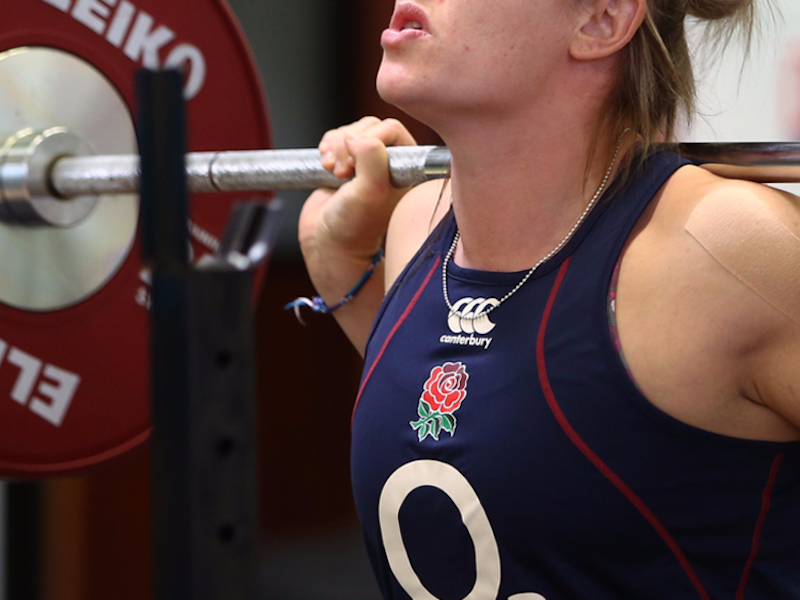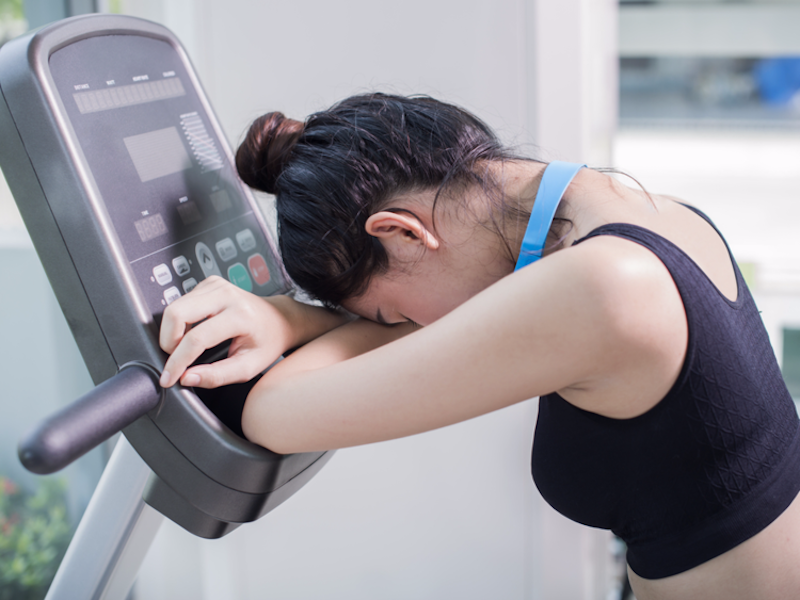A woman’s muscles ‘turned to jelly’ due to over-exercising — here’s exactly how that happened.
by Emily DiNuzzo

A woman (not pictured) left her workout feeling dizzy. Jordan Mansfield /Getty Images via INSIDER
-Amelia Burns developed a serious condition because of over-exercising.
-She experienced bizarre swelling, muscle weakness, and blurred vision post-workout.
-INSIDER spoke with Dr. Nesochi Okeke-Igbokwe about the condition and what precautions you can take.
Amelia Burns was going through her regular strength training workout this past September, pushing herself for the last few reps of an arm exercise. Later that day, the 30-year-old mother of two experienced bizarre swelling and weakness in her muscles before passing out, according to the Daily Mail. The UK native was hospitalized two days after the episode.
She was eventually diagnosed with rhabdomyolysis — a serious condition caused by over-exercising.

Burns (not pictured) felt dizzy and weak after her workout. Shutter stock
The diagnosis came after blood tests revealed her creatine levels were nine times higher than average, which can be indicative of the condition. Physician and health expert Dr. Nesochi Okeke Igbokwe told INSIDER in an e-mail that rhabdomyolysis is uncommon, and essentially means there has been injury or damage to the skeletal muscle as a result of an extremely vigorous high-intensity workout.
“All this means is there has been skeletal muscle damage and break down that may cause certain proteins to be released into your bloodstream and cause harm to the body,” she said.
Burns, a regular gym-goer, told The Daily Mail that she couldn’t even lift a water bottle after returning home from her workout. She said that her routine wasn’t extraordinary, although she pushed herself to lift the heaviest weight possible for the final 10 reps of one exercise. She only realized something was wrong once she got home and her arms swelled and became weak “like jelly,” The Dail Mail reports. INSIDER reached out to Burns, but did not hear back at the time of publication.
“Everything happened in really slow motion,” she said. “I couldn’t lift my arms and blackness started to cloud the edge of my vision.”
In addition to swelling, muscle weakness, and blurred vision, complications of the condition include electrolyte imbalances, paralysis, kidney failure, and even death, according to PubMedHealth.

Any form of extreme exercise could cause the condition. Shutter stock
Although Burns’ case is related to exercise, the condition could also be caused by trauma, crash injuries, or even as a side effect of some drugs, according to Okeke-Igbokwe. She noted that you could also develop the condition from overexerting yourself with other exercises like spinning and cross-fit training.
Okeke-Igbokwe also said that, when talking about exercise-induced rhabdomyolysis in general, it is possible for one single isolated intense workout to cause the condition.
“I’ve treated patients before that were hospitalized with [rhabdomyolysis] who were exercise newbies trying out an intense workout for the first time, as well as patients who were high-intensity athletes that have been working out for years,” she said. “What both groups had in common is that during their workout, they overexerted themselves and pushed their bodies too far very quickly with the intensity of the workout.”
Okeke-Igbokwe recommended staying hydrated during your workout and gradually increasing the intensity, instead of jumping into “beast mode” when initiating a new routine to avoid over-exercising.
“It’s a rare condition. But really the take-home point for anyone lifting weights or working out is simply not to overexert yourself in [an] activity that your body may not be capable of handling,” Okeke-Igbokwe said. “This goes for long time athletes as well.”
Learn more on INSIDER


